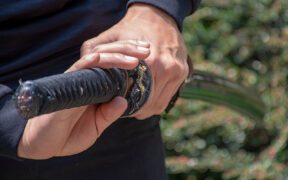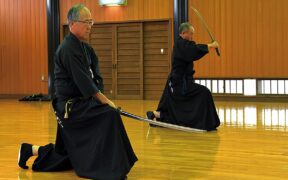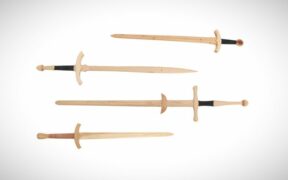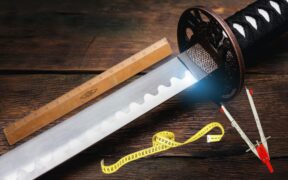Our content features commercial links to our products, committed to transparent, unbiased, and informed editorial recommendations. Learn More
What is Iaito and Why is it Ideal for Iaido Practice?
NO AI USED This Article has been written and edited by our team with no help of the AI
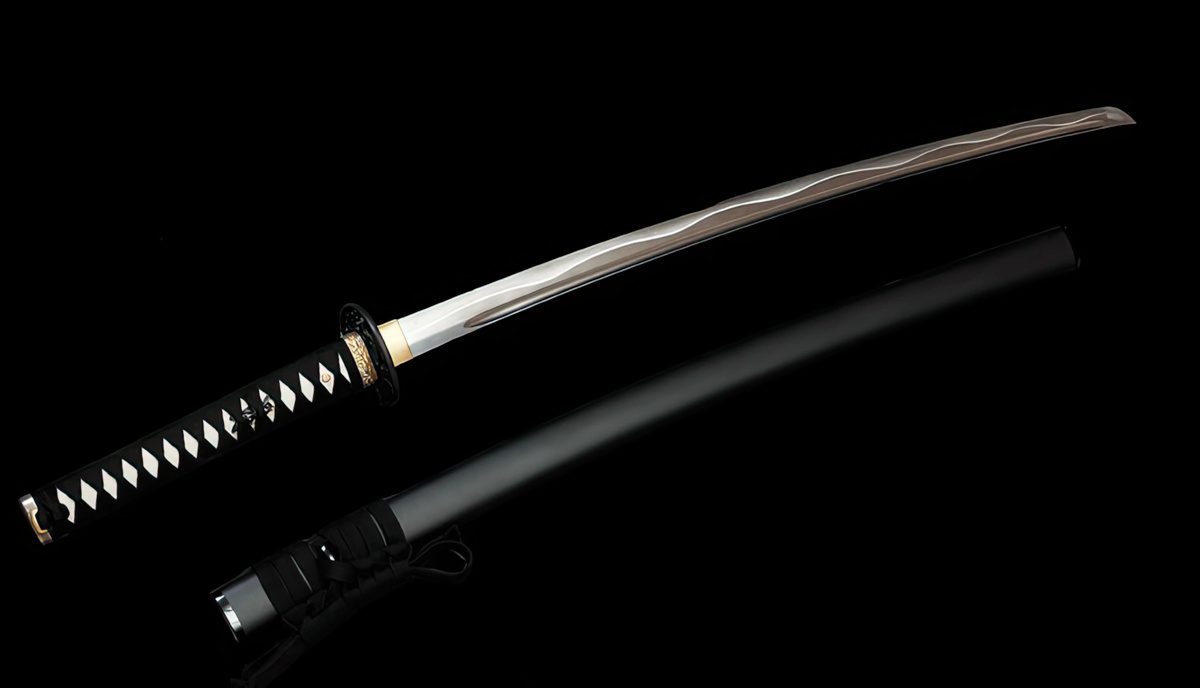
The iaito sword is designed specifically for iaido, the Japanese art of drawing the sword. It replicates the quality of real swords but has an unsharpened blade, allowing practitioners to hone their forms and techniques safely. Nowadays, several thousand people worldwide practice iaido as a martial art, making the iaito more popular than ever.
Characteristics of an Iaito Sword
Unlike real swords with sharp blades, an iaito has an unsharpened blade and cannot be used for cutting. Still, it features the traditional fittings of a Japanese sword, making it indistinguishable from the real one.
Here are the characteristics of the iaito sword:
Metal and Construction
In Japan, iaito swords are not made of steel but zinc-aluminum or nickel alloy blades that cannot be hardened or sharpened. The training sword is designed as such so that it would be exempted from the jūtōhō sword registration law. Therefore, an iaito is unsuited for contact drills and only intended for practicing solo forms. Outside Japan, some martial arts practitioners utilize iaito with unsharpened carbon steel blades.
Blade Appearance

An iaito has a slightly curved blade without a cutting edge. It lacks a genuine hamon or temper line pattern seen on Japanese blades, though some may feature a stenciled or etched hamon for aesthetic purposes. It may also feature a groove (hi) to lighten the blade, but decorative carvings (horimono) are uncommon.
Size and Weight
An iaito reproduces the size, weight, and balance of a real Japanese sword. Measurements may vary, but it usually corresponds to the measurements of a katana or a wakizashi. A katana sword has a blade length of over 2 shaku or 60 centimeters, while a wakizashi is between 1 and 2 shaku (about 12 to 24 inches or 30.3 to 60.6 centimeters).
Sword Mounting
The iaito sword often comes with traditional koshirae or samurai sword fittings. They tend to be less ornate and practically mounted, though decorations are based mainly on personal preferences.
Hilt (Tsuka)
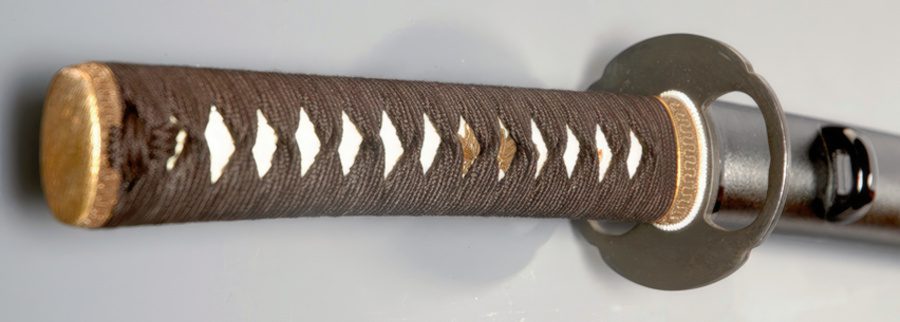
Like traditional Japanese swords, an iaito has a wooden hilt (tsuka) covered with ray skin and silk braid wrapping (ito). It also features decorative metal fittings, such as the fuchi and kashira that protect the ends of the hilt, and a menuki under the hilt wrapping. The sword guard (tsuba) often comes with a smooth finish instead of high-relief decorations for a more comfortable grip.
Scabbard (Saya)
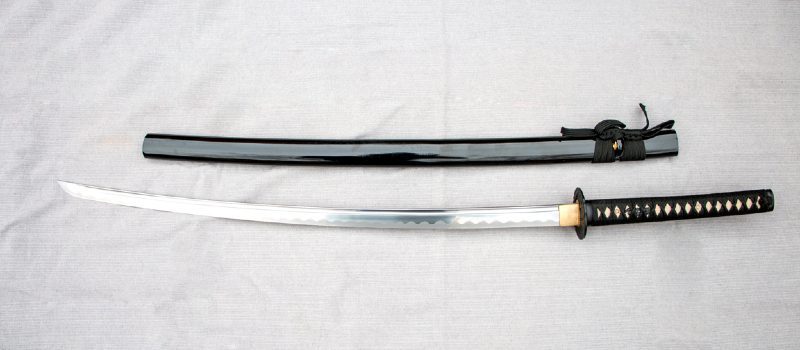
The scabbard is an essential component in iaido, as the practice involves drawing and re-sheathing the sword from it. It is traditionally made of wood, lacquered, and comes with a sageo cord to be attached to the belt.
A Brief History of Iaido
The iaido developed from iaijutsu to use sword practice for personal development rather than combat. Originally, iaijutsu was oriented toward practical combat applications, mainly to incapacitate or kill an enemy. It is known for its defensive sword drawing, quickly getting the sword out of its scabbard and cutting or injuring the enemy in one motion.
Iai is the art of drawing the sword, and the movements of the iai consisted of drawing, cutting, removing the blood from the blade, and returning the sword to the scabbard. Modern iaido also involves similar movements but focuses on mental calmness and breathing. Iaido is closely associated with kendo which developed from kenjutsu, an aggressive style of swordsmanship.
The Iaito Sword in Iaido
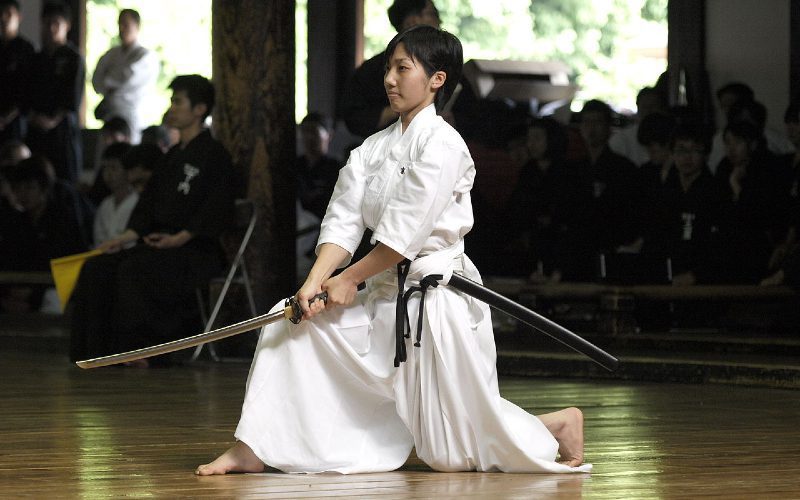
The iaito replicates the quality of the katana sword and allows safe honing of the sword forms and techniques. The iaito is worn the same way as the katana sword, tucked into the belt at the left hip, edge-up. If a short sword is worn, its scabbard is also worn edge-up.
Those who study iaido are called iaidoka, meaning iaido professional or iaido-person. Iaido students generally practice solo techniques using the iaito. However, they never use their metal blades in contact drills as they would never stand up to the repeated strikes the partnered practice requires.
Instead, iaido students practice partnered techniques using wooden swords called bokken. Only masters use real swords with sharp blades (shinken) in tameshigiri or cutting practice, applying the correct swinging technique and proper cutting distance.
Iaido is one of the more formal Japanese budo (martial ways). In the dojo (martial arts training halls), iaido practitioners wear traditional Japanese martial art uniforms, generally consisting of baggy pleated pants (hakama) and a wide belt called obi worn over the light jacket.
Iaito Sword and the Jūtōhō Law
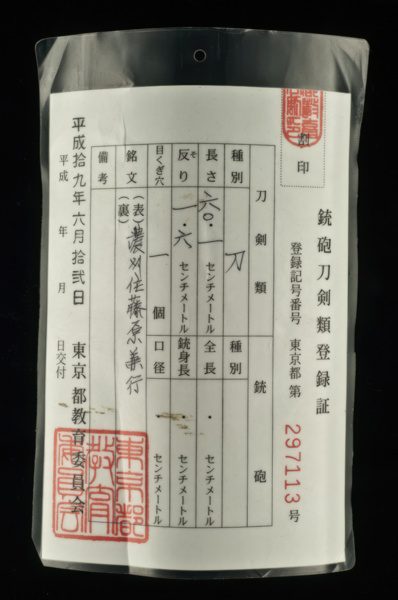
Passed in 1958, the Jūtōhō is Japan’s law controlling the possession of swords and firearms. It generally applies to antique and newly-made swords, but the iaito training swords, made with zinc aluminum blades, are exempted.
Generally, sword blades in Japan have to be registered, and the registration process issues a license called tōrokushō, which must always stay with the sword. However, the tōrokushō is not a certificate of authenticity. It only registers the sword blade, stating its type, such as a katana, wakizashi, or tanto, its measurements, and such.
Also, the registration only applies to swords that meet the standard of a historical object, a work of art, or a foreign-made sword. Non-traditionally made swords, especially those of the Shōwa period from 1926 to 1989, are illegal and might be confiscated.
